Polar Temperature Amplification
Polar temperature amplification refers to the fact that the deviation from the mean is much higher in the polar regions then in the rest of the globe, this is attributed to the positive feedbacks from the retreat of ice and snow and other lesser reasons.
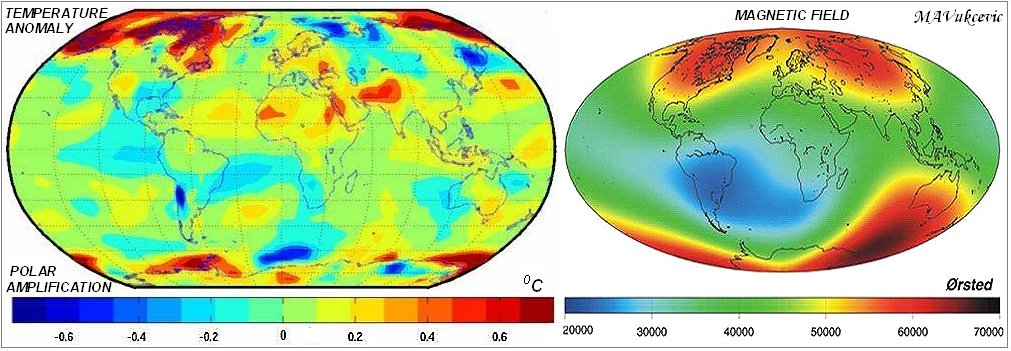
'polar amplification': Global temperature standard deviation from the mean
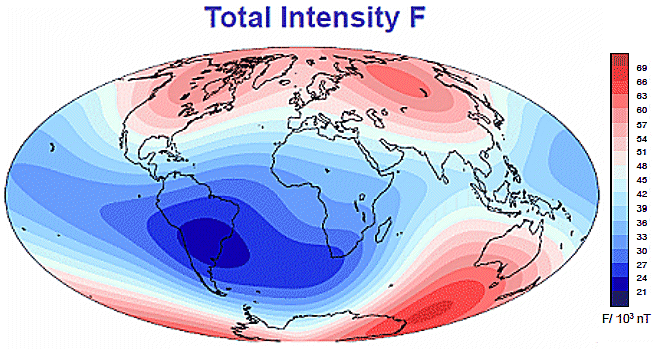
Global magnetic field distribution may be an alternative explanation
The Earth's magnetic field is in a permanent flux, the overall strength of the field has been gradually declining during last 150 years.
Jean Dickey of NASA's Jet Propulsion Laboratory, Pasadena:
One possibility is the movements of Earth's core(where Earth's magnetic field originates) might disturb Earth's magnetic shielding of charged-particle (i.e., cosmic ray) fluxes that have been hypothesized to affect the formation of clouds. This could affect how much of the sun's energy is reflected back to space and how much is absorbed by our planet. Other possibilities are that some other core process could be having a more indirect effect on climate, or that an external (e.g. solar) process affects the core and climate simultaneously.
South Hemisphere's magnetic field's maximum strength is concentrated in a single area and its decline has been relatively even.
Changes in the Antarctic's magnetic field (on bi-decadal scale) are closely synchronized and correlated with the TSI, i.e. the solar closed magnetic flux.
Most recent reconstruction of TSI by Wang, Lean, and Sheeley (The Astrophysical Journal, 625:522-538,) is based on a flux transport model to simulate the long-term evolution of the closed solar magnetic flux that generates bright faculae.
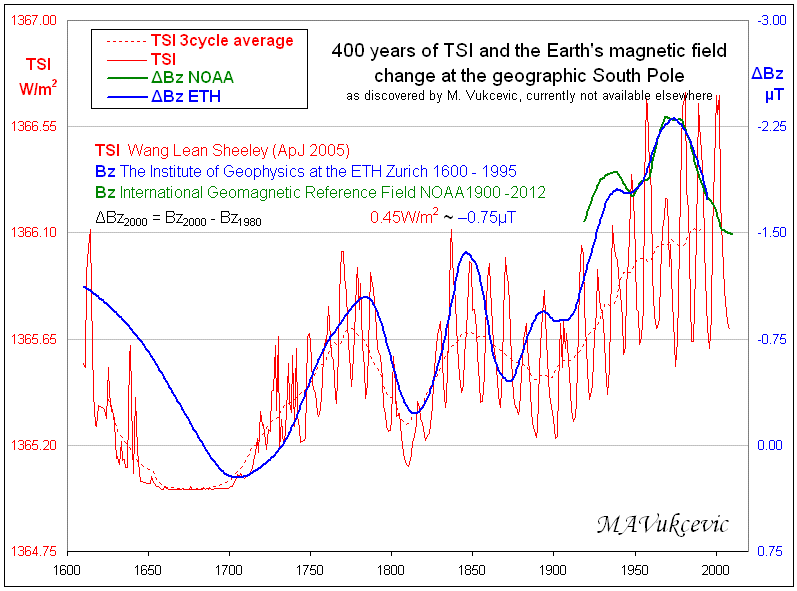
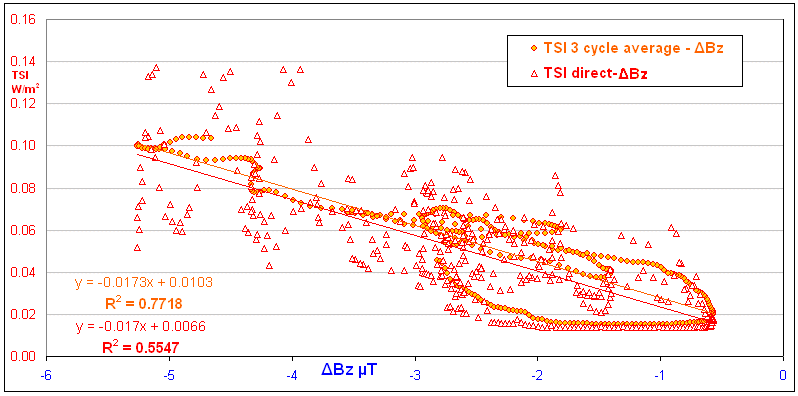
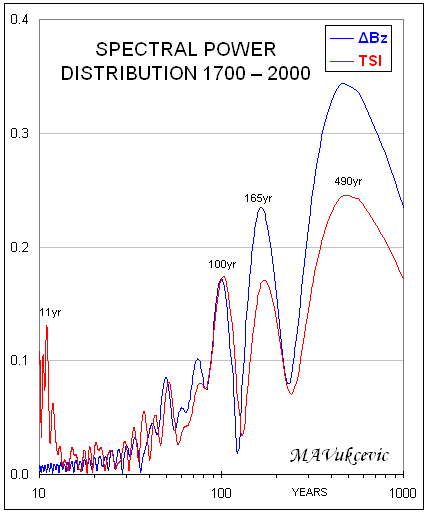
In the North Hemisphere magnetic distribution is more complex, its maximum strength is split between two areas, thousands of miles apart, one is located in the general area of Hudson Bay and the other in the central Siberia, north of Baikal Lake.


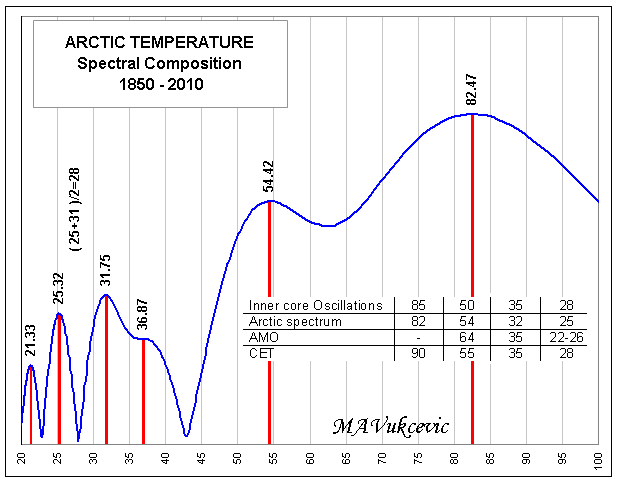
© m.a. vukcevic